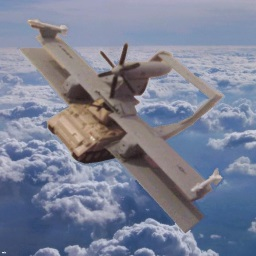

What kills me about this is that they did the long pause and reset and infrastructure buildup between the hoppers and the first full stack.


What kills me about this is that they did the long pause and reset and infrastructure buildup between the hoppers and the first full stack.


Yeah, some of the problems are not Block 2 specific. Maybe the resonance and disappearing Raptor 2s are, but some of the leaks, blown up COPVs, and heat shield issues will destroy Block 3s, too.


My first aid kit always has some Aquatabs! They’re such a small thing to easily leave in there just in case. In that same vein, I have some pull apart fire starters about the size of earplugs in there as well.
Stealth discreet delivery for all your massive ordnance penetrator needs
Have you seen Iron Sky?


SpaceX is now targeting Monday, June 23, at 1:25 a.m. EDT (0525 UTC) for its next launch attempt


That’s actually quite typical, I’d like to make that point.


Shout-out to Rocket Lab for building the first 3 buses for Varda. Hopefully this works out, but I’m expecting some teething issues. I really like what Varda is doing overall, and bringing their bus manufacturing in house seems like an important part of scaling up.


Where the hell did this come from?
If Honda decides to get into the launch business with a reusable rocket, that’s curtains for a handful of undifferentiated launch companies.


Let’s just pretend the V2 ship design never happened.
Hopefully the ground infrastructure isn’t too damaged.


I love this. For a real LEO economy including manufacturing, we need cheap launch and reentry. Atmos and Nyx both getting cheap rides on SpaceX rideshares is great for pushing that technology development.


Luckily Russia Flexsealed the heck out of PrK to stop the air leaks, otherwise this wouldn’t have been allowed to launch.


A 2-seater in 10 years for $1+ billion isn’t the most inspirational thing ever, but they have to start somewhere? It was 10 years from the first Cargo Dragon to the first crewed Dragon 2 flight, Demo-2.


Based on who wrote it, my guess is more that it’s an easy way to tax bigger companies that can afford it, not a way to be nice to startups / small launch.


For some reason I was thinking it was the same ring of 9 for each vehicle, but different numbers of those rings depending on launcher capability and fairing size.
But needing to go to different facilities to integrate the stacks and deal with the different companies sounds awful.


They must be planning to ask for an extension.
Their manifest on Wikipedia lists this for the rest of the year, with x sats on board each (I’m rounding up and assuming multiples of 9):
Atlas V, 27 (today)
Falcon 9, 27
Atlas V, 27
Vulcan, 45
Ariane 6, 36
And no planned New Glenn launch until next 2026. Other than the Vulcan, I could see those launches happening. There’s just no way they hit the 50% mark next year. No way.


The Kuiper launch manifest has to be such a pain to deal with.
https://en.wikipedia.org/wiki/Project_Kuiper#Launches
Atlas, Atlas, Falcon, Atlas, Vulcan, Ariane, New Glenn.
Different environments, quantities, integration facilities, companies… Best of luck.


Licensing fees could make sense if they help the FAA staff up and speed up. I don’t see how the payload mass plays into that goal. They must have some other motivations. It could just be “heavy payloads can afford a more expensive license”, which isn’t inherently true in the era of cheap mass to orbit.
That fee per pound of payload also doesn’t preclude crazy edge cases like Starship bidding to launch the TROPICS cube sats.
Escapade going to chill at L2 for awhile is odd, but decoupling their transfer window from a new rocket’s schedule isn’t the worst.
There’s no way that Firefly rideshare is going to make them any money. Actually, these are basically all Bezos subsidized demo missions until the first Kuiper launch. Blue is just completely averse to making money.